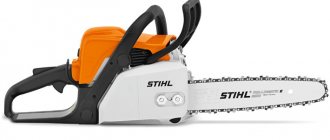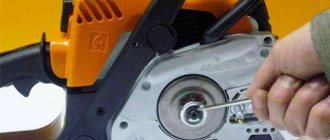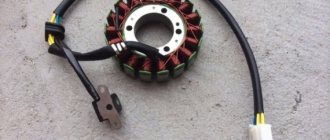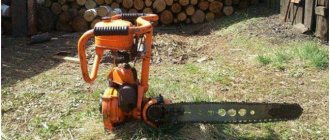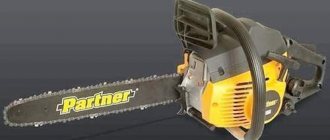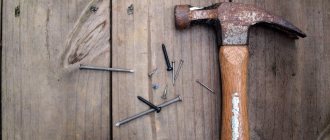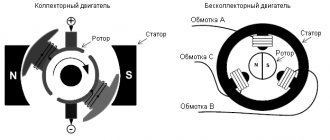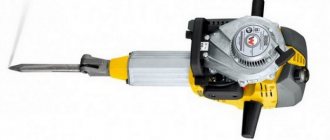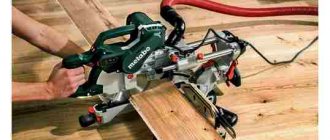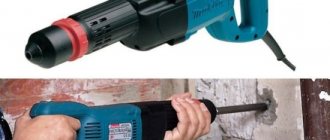How to fix it yourself?
Diagnostics
Mechanical problems can be easily determined by eye or ear.
When the hammer operates, an uncharacteristic hum or clicking sound is heard. Sometimes a grinding or knocking noise is clearly heard, which is accompanied by a disgusting smell from the case. The most typical mechanical failure due to high loads on equipment is excessive exposure to dust and dirt on the tool body. It is subject to constant switching on and switching of operating modes, which is why the entire hammer system suffers.
If the cartridge fails, this is detected immediately when the hammer is plugged into the electrical network. This is due to the fact that there is an excessive load on the parts, and with constant vibration a large flow of dust comes in. Mechanical bearing failure, damage to gear teeth, clutches and cracks in the spindle clamp can easily be corrected by hand.
Diagnostics of the electrical part occurs by identifying the following signs:
- there is no reaction from the motor when the device is connected to the electrical network;
- when scrolling, sparks come from the commutator brush;
- there is a smell of burnt insulation;
- a stream of thin smoke with a pungent odor is visible from the body.
Disassembly and cleaning
- The first priority when disassembling the hammer is to unscrew the locking spring and remove the lance.
- Then unscrew and put aside the locking ring on the muffler. This procedure requires special tools with twisting properties.
- Remove the ring on the top of the bumper, take out the intermediate link retainer, and if possible, the connecting link itself.
- If during diagnosis it was discovered that the barrel bores were freezing due to moisture ingress, then first check the compressed air pressure. Blow the base with a compressed air stream and, if there is a malfunction, replace the hose.
- If it is not possible to eliminate the damage by squeezing it out with air, then wash and clean it from dirt and hardened water.
- When the hammer operates slowly, disconnect the hose from the network and the hammer and check the air pressure. The length of the rubber hose from the air duct to the hammer should be 10–12 m. If this value is exceeded, the excess part of the hose is cut out or replaced with a suitable size.
If the sleeve is pinched due to too much or, conversely, thick lubricant, you need to disconnect the sleeve.
Blow out the freed sleeve, wash the hammer and run it in. Weak impacts of the tool when the valve distribution is not tightly pressed to the end of the barrel are corrected by disconnecting the hammer and removing the muffler. In this case, move the locking ring and remove the lock from the equipment.
To correctly position these parts and obtain the required frequency of impacts per unit time, you need to turn the link all the way and install the lock so that it fits exactly into the holes of the barrel and link. If foreign objects are found between adjacent parts, they are removed by disassembling the tool into its component elements. The following are removed from the housing by washing:
- dirt;
- sand;
- accumulated chips;
- other extra particles.
After washing, all parts are well-aired, assembled, and then run in.
If it is not possible to repair a jackhammer with homemade elements, then use parts that will restore the primary functions of the tool:
- air and fuel filters;
- egnition lock;
- electric motor commutator brushes;
- oil;
- spark plug;
- rotor;
- stator;
- cartridge;
- bearing;
- cord and plug;
- armature and stator winding;
- ring;
- anther.
Basic criteria for choosing a tool
- Dimensions. Compactness is valued.
- Weight. It should be relatively small, since the equipment is fundamentally comfortable to use in any position; otherwise, what efficiency can we talk about.
- Power cord length (for power tools).
- Placement and dimensions of the Start button. It should be at hand, and the dimensions should be very suitable for comfortable pressing.
- Motor power. One of the fundamental characteristics when choosing a jackhammer. It fluctuates between 500-2000 W. The greater the power, the higher the level of performance of the device, the stronger the blow, the number of shock movements per minute.
- The greatest force of a single blow. Measured in Joules. The multifunctional capabilities of a particular model of instrument depend on the force of impact. In general, this indicator can be at around 3-60 J or more.
- Number of beats per minute. It depends on the previous property.
- Suitcase. It contains the hammer and additional gear that comes with the kit.
- Availability of an additional handle. It can be flat or D-shaped.
- Nozzles The more attachments, the wider the range of work performed.
- Possibility to set the beat frequency. You can create a setting for this indicator using several methods (depending on the specific model): by the degree of pressing of the button, with a special regulator with the ability to fix the “Start” button.
- Standby mode support - the ability to disable the idle shock function in automatic mode.
- Protective system. Activated when the unit starts. Limits starting currents, which completely eliminates the possibility of a surge in energy consumption.
- Anti-vibration system. Created to combat noise and vibration, focused on their reduction. The latter is achieved thanks to the built-in dynamic counterweight. Also, in order to reduce vibration, the tool can be equipped with special handles with spring suspension and damper inserts, rubberized pads and foam pads.
- Availability of built-in control devices (monitors, indicators). Allows timely detection of brush wear, the condition of the cord and plug, or the need for maintenance.
- Gearbox housing. Can be made of plastic or metal. If metal was used in the manufacture of the hammer, the distinctive feature of the hammer will be its heavy weight, which is unprofitable for the user. There is no need to be afraid of the plastic case - it is light, strong and wear-resistant.
- Possibility of adjusting the appropriate mode of equipment. In the vast majority of cases, 12 positions are used, which can be fixed every 30 degrees.
Is it possible to get by with a heavy perf where the use of a light fender is indicated?
For a one-time job, with chiselling for 10-15 minutes - yes. For the unchanging - no. The fact is that any hammer drill has a comparably worse implementation of heat removal from the piston group - the specificity of the operation does not imply long-term switching on, therefore overheating is not particularly taken into account. In any jackhammer, the working cylinder is made much larger - a powerful blow is needed. And the entire barrel is responsible for removing thermal energy from air compression. Therefore, even the cheapest chipper can hammer for 40-60 minutes without consequences.
Concrete breaker Bosch GSH 16-30 Professional – from 62,080 rubles
A reliable and quite powerful tool for crushing asphalt concrete pavements, block and solid foundations.
The weight of the tool allows you not to put pressure on it when knocking down the screed, and thanks to thoughtful ergonomics and proper balancing, you can even work along the wall. This is what provokes many users to violate operating rules: huge pieces are caught, the body of the tool is used as a lever when breaking off cracked parts of masonry and solid structures.
Hence the ten-millimeter gaps in the lance shank in the barrel, the deformation of the equipment at the base, and the cracks in the duralumin gearbox housing.
Technical properties of the Bosch GSH 16-30 Professional concrete breaker CharacteristicsValue
| Fastening equipment | HEX |
| Power consumption, kW | 1.75 |
| Impact power, J | 41 |
| Impact frequency, beats/min | 1 300 |
| Weight, kg | 16.5 |
Video report of the dismantling of foundation brickwork using a Bosch GSH 16-30 Professional concrete breaker, with the tool held mostly in the horizontal plane.
Pneumatic jackhammer Renza MO-3 V – from 7,400 rubles
Jackhammer for processing all reinforced concrete structures, in shift mode.
The entire line of MO was developed in the last century, without taking into account the advertising component. The bet was made for simplicity of design and ease of use. Of the four modifications, version 3 V is the most widespread. The range of its abilities allows you to work in any plane and with any materials.
In order to put the MO-3 V into operation, the tool must be disassembled and all conservation lubricant removed (its composition is designed only for storing the tool). Special pneumatic oil is added through the inlet fitting at least 2 times per shift.
READ How to evenly trim ceiling plinths in the corners
Technical properties MO-3 V CharacteristicsValue
| Fastening equipment | End spring |
| Air consumption (working pressure), l/min (atm) | 1 500 (3.5 – 5) |
| Impact power, J | 44 |
| Impact frequency, beats/min | 1 150 |
| Weight, kg | 9 |
The correct procedure for assembling and disassembling the MO-3 V jackhammer is shown in the video clip:
Jackhammer Tecamech GH55 – from 37,750 rubles
A reliable version of low-cost, stand-alone equipment designed for demolishing concrete structures, clogging pipes and compacting crushed stone.
Lighter in the class, the gas hammer produces one of the greater (both in terms of feelings and in terms of the passport) characteristics of impact power. The reason is proper balancing and the highest torque on the gearbox. Which reduces the rotation speed of the fastest (8,000 rpm) two-stroke hammer in the class of autonomous jackhammers by 6 times.
Technical properties Tecamech GH55 CharacteristicsValue
| Fastening equipment | NOT X |
| Motor power, hp | 3 |
| Impact power, J | 55 |
| Impact frequency, beats/min | 1350 |
| Weight, kg | 18 |
The video shows the operation of a jackhammer, which is not only equipped with a similar engine, but also completely replicates the design of the Tecamech GH55.
Tell me how to choose a jackhammer?
Consider the weight - the heavier the instrument, the better it “fits” into each blow.
Pay attention to the frequency of the impact - the lower the stated value, the more destructive each shock. As the frequency increases, the accuracy of operation increases.
These rules are common to everyone. As for the type of drive, it is impossible to give clear advice without taking into account all aspects.
Don’t get hung up on the numbers that “characterize” the force of the impact - although these joules exist, they depend on a combination of a variety of reasons. The theoretical value is calculated based on the available data. And not every model has been tested for impact power in laboratory conditions. There is also no uniform methodology for such tests. By the way, in Europe there is a tendency to move away from pure marketing among manufacturers of professional tools. Since 2016, Atlas Copco has not shown any joules anywhere, neither in marketing nor in technical documentation for new (the same RTEX) equipment.
Jackhammer Makita HM0870C – from 22,908 rubles
A tool for intensive use on vertical surfaces, at heights, in confined spaces. Every structural element and every detail of the working units is calculated to the smallest detail: wide air ducts around the stator landing site prevent dust from settling on the windings; hardened clamps in the chuck reduce the risk of equipment getting stuck; slide type switch with fixation.
The successful design of the HM0870C model became the model for a huge number of counterfeits. The most obvious thing that gives away a “replica” is the similar serial numbers and differences in the corporate color of the parts of the Systainer and the jackhammer. But the possibility of acquiring a counterfeit remains, even if these signs are not identified. Since even a unique, but unofficially imported into the Russian Federation Makita tool.
Technical properties Makita HM0870C CharacteristicsValue
| Fastening equipment | SDS-Max |
| Power consumption, kW | 1.1 |
| Impact power, J | 7.6 |
| Impact frequency, beats/min | 1 100 – 2 650 |
| Secondary functions | Impact frequency adjustment, network indication of defects in electronics |
| Weight, kg | 5.1 |
The user talks about the features of the Makita HM0870C jackhammer, showing the good condition of individual blocks of unusual used equipment.
How to choose the right compressor for a pneumatic jackhammer?
In the case of variations of air chisels, it is possible to get by with a household compressor. Compare how much air the tool consumes during operation and how much air the receiver emits before the automation is activated; consider the compressor performance.
For example, in order to ensure a measured supply to a hammer with a consumption of 110 l/min, the receiver must deliver more than 110 l/min in operating mode. A 100-liter storage tank at a pressure of 8 atm (the upper limit for a household compressor) holds 800 liters. When 630 liters remain in it (the lower working threshold of the tool), the compressor will again begin pumping up to 800 liters. We see that for a minute of continuous operation of the air chisel, the capabilities of the 100 liter receiver are enough.
Next, we look at the characteristics of the pump - by pumping 250 l/min, it will provide air to the instrument and will be able to increase the pressure in the receiver. Which will take him less than 2 minutes. After this, he will fall silent until the pressure drops.
With the usual operating cycle for a compressor (60% of the time for pumping, 40% for rest) and continuous operation of the tool, there is compliance with the operating rules. Taking into account the fact that it only takes 10-15 seconds to chop the bodywork of a car without a break (if the roof is at an angle), then the compressor has approximately 30% more time to rest than it needs. A completely acceptable option.
In the case of a pneumatic hammer, which consumes a cubic meter or more per minute, you need an industrial compressor on a mobile platform.
Kinds
By weight
The wide range of applications of jackhammers is achieved due to the specific differences between individual models. Thus, the lightest devices (whose weight is less than 6 kg) are used mainly for domestic purposes. They can confidently cope with crushing tiles, plaster, and relatively thin cement floors. Medium-weight devices are widely in demand among builders; they are used to break asphalt. The most powerful devices weigh up to 30 kg and are needed mainly in large-scale construction work.
By drive type
Pneumatic jackhammers are used more often than other options. Compressed air is obtained using a compressor. Under the influence of the air flow, the chisel begins to move. Household air-driven devices must deliver impacts with a force of at least 5 J. For industrial units, the requirements are twice as high. Such characteristics make it possible to:
- destroy sidewalks;
- demolish buildings made of natural or artificial stone;
- break through concrete and so on.
Hammers with an electric motor are equipped with special internal strikers. The strikers are driven by rotating parts. Electrically driven units can easily break a wall or covering
But it is important to understand that the high power generated by an electric motor is not always good. This property makes it difficult to fully drill and cut materials. Problems may also be associated with the appearance of sparks
They are found even in the most reliable models. As a result of this feature, electrical devices cannot be used in places with high fire risks. Conventional models are not able to work separately from the mains. An exception may be battery-powered versions, however, they are heavier than their plug-in counterparts.
Problems may also be associated with the appearance of sparks. They are found even in the most reliable models. As a result of this feature, electrical devices cannot be used in places with high fire risks. Conventional models are not able to work separately from the mains. An exception may be battery versions, however, they are heavier than their plug-in counterparts.
Hourly current consumption (in terms of continuous operation) reaches 1.7 kW. Each blow has a force of 45 J, and such blows are delivered 2000 times per minute
Important: all modern models of fenders with an electric motor are equipped with double insulation, so you can connect the device to a home outlet without any fear. A gasoline (also known as a petrol jack) hammer is easy to use. Such mechanisms can work even where there is no electricity and it is not very convenient to use compressors
In addition, versions with internal combustion engines are safer than electric or pneumatic deflector systems. But we must take into account that the heat engine creates a lot of noise. You will also have to constantly fill the tank with fuel, that is, continuity of operation is a big question
Such mechanisms can work even where there is no electricity and it is not very convenient to use compressors. In addition, versions with internal combustion engines are safer than electric or pneumatic deflector systems. But we must take into account that the heat engine creates a lot of noise. You will also have to constantly fill the tank with fuel, which means continuity of operation is a big question.
Petroleum hammers driven by gasoline engines perform well:
- during the destruction of rocky and icy soil;
- when dismantling asphalt and concrete;
- in the process of resource extraction.
Impact breakers with internal combustion engines help to break up materials of varying hardness in a short time. The size of the processed blocks does not play a special role. Hydraulic devices deservedly stand out in a separate group. The drives for them are a variety of devices. Basically, the hydraulic fender, due to its versatility and high performance, is used by rescue teams.
This is interesting: Soldering iron for polypropylene pipes, nozzles for soldering polypropylene - let's look at it in detail
What is a jackhammer used for?
Rock mining, stone processing, demolition of old permanent buildings, road work - all these activities have long been associated, literally, with convicts. Indeed, try applying it every day, from morning to evening, with a pick, sledgehammer or crowbar! And it is not for nothing that forced labor of slaves or convicted criminals was very widely used for such activities.
A pickaxe, a sledgehammer, a wedge, a shovel - and so on throughout the thousand-year history of mankind, until the beginning of the 20th century, when the first jackhammers began to come to the aid of miners.
But slavery, we hope, is almost completely a thing of the past, and the attitude towards prisoners has also undergone great humanistic changes. And the scale of modern construction projects or mining cannot be satisfied by unproductive manual labor. No way without mechanization!
The solution to the above problems was greatly facilitated by the appearance of jackhammers - they began to be widely used in the first decade of the last century. In fact, a special tool was born in which the energy supplied from outside underwent transformation and was “converted” into an accentuated blow at the end of the working tip - peaks, chisels, blades, etc.
Of course, over their more than century-long history, jackhammers have undergone serious “evolutionary transformations” - they have become lighter and more compact, convenient and productive in operation. But the scope of their activities has not received any fundamental changes. As before, these instruments take on the most difficult operations that require great physical effort:
This is the partial or complete demolition of old structures - where the use of heavier construction equipment is impossible or impractical.
Demolition of the old building along with its reinforced concrete strip foundation
This is the dismantling of walls or ceilings, making openings in them for windows, doors, flights of stairs - during construction, with changes in design documentation, or during redevelopment. You can also use a jackhammer to cut down the rods of a metal reinforcing frame using a special chisel.
Making a window in the interfloor ceiling for subsequent installation of stairs
Dismantling old road surfaces, including asphalt or concrete.
Removing old road surfaces is just the job for powerful jackhammers.
Loosening compacted or frozen soil for further excavation work.
Sometimes there is no way to proceed to excavation work without using a jackhammer to “rip up” the top layer of soil that is not amenable to shovels - it is too rocky, compacted or frozen.
Compacting soil in places where the use of other devices is impossible.
A problem with the “opposite sign” - sometimes the soil in a separate area needs to be compacted as much as possible. This can also be solved with a jackhammer, but with a special attachment.
- Despite the introduction of special mining equipment, this industry still cannot do without “manual cleaning” using jackhammers. And in some places they remain the main tool of miners to this day.
- They come up with other uses for jackhammers. For example, cunning craftsmen make special equipment for driving small piles or pipes into the ground.
What does the jack mechanism look like and work?
The impact force here is generated by a special mechanism located under the hood. It creates the necessary shock waves that travel to the switch and further to the material, destroying it. Everything works like an earthquake. The shredder is quite heavy, noisy and very vibrating in the process. It is true that manufacturers try to minimize the effects of vibration, but frequent and intensive hammer use has a negative impact on human health.
Specific switches are also suitable for home use, but you will often find them on large construction sites or road works. If you need to buy such a tool, you need to know how to choose a jackhammer: should you buy an electric or pneumatic one, is the design important, what performance characteristics should be taken into account? The right choice will save you from inconvenience during the work process and make life much easier for the developer.
READ Metabo screwdriver for ice auger which one to choose
Device
The main structural elements for any type of jackhammer are represented by a striker, a nozzle, a cartridge, etc.
Pneumatic piston models are designed according to piston systems based on the impact principle. The main structural elements are represented by a starting spool, a striker, a piston, a fitting for a compressor hose, a cup with a ring valve and a valve box, and a muffler. In addition, jackhammers include two springs, a shock absorber, a retaining ring, a handle, and a body.
These parts are combined into several units.
- The hammer, also called the trigger and air distribution mechanism, includes the firing pin and the barrel.
- The vibration protection of the handle is represented by a glass and sealing bushings.
- Anti-vibration protection from the chisel includes a manipulator and a spring-loaded bushing.
- The housing-handle includes a housing, an aerodynamic noise muffler and a trigger mechanism.
The impact system has two main functions: supply, distribution and removal of air, converting its energy into work.
Electric models are equipped with such specific components as an electric motor, a gearbox that serves to convert the rotation of the latter shaft into reciprocating movement, a crank mechanism with a piston that provides pressure in the cylinder acting on the firing pin.
Components specific to internal combustion engine jackhammers include the carburetor, fuel tank, starter, ignition system, and fuel pump. In addition, taking into account the increased vibration of these devices, the handle and control elements are separated from the body by a spring suspension.
In addition, there is additional equipment for a hammer. It includes the following four devices. An automatic speed controller, called soft start and idle speed limiter, serves to extend engine life by eliminating overloads and gradually accelerating. The principle of its operation is based on adjusting the speed in accordance with the load. The side handle improves ease of use by promoting proper grip and distribution of effort. The impact frequency control increases the degree of control of the tool, allowing the demolition hammer to be adjusted to suit materials of varying hardness. The button lock ensures that there is no need to constantly hold it during operation.
The principle of operation of jackhammers is to create reciprocating movements of the striker located in the barrel, which is not kinematically connected with other parts. This is accomplished by different mechanisms depending on the type of hammer.
Thus, in piston pneumatic models, the air supplied by a hose from the compressor overcomes the resistance of the valve spring when acting on the handle. As a result, the valve moves, opening the opening of the impact mechanism. Alternately, a vacuum and excess pressure are created in the lower and upper parts of the cylinder due to the passage of compressed air between them by the valve system, generating reciprocating movements of the striker.
The operation of a pneumatic turbine hammer is based on the drive by the energy generated by the rotating air of the turbine wheel.
Gasoline hammers are also usually equipped with a pneumatic impact mechanism. The piston, changing the pressure in the cylinder, leads to the movement of the hammer piston with an attached tip.
Peculiarities
It is customary to distinguish two stages of repairing such equipment. During defect detection (also known as troubleshooting), they find out what exactly has failed, as well as how long the resource of the device is. At the second stage, the problematic parts are replaced. Experts believe that there is no point in repairing a very worn-out device. It still won't work as long as it takes to compensate for the effort and cost of spare parts.
In order to repair a jackhammer as rarely as possible, you need to systematically check its condition. Maintenance of products is carried out without special equipment, and saves a lot of time. As for spare parts, you can find only a limited range of them on the market. There is simply no point in changing many parts, since it is more profitable to purchase a new tool. Available for purchase:
- air distribution mechanism;
- striker;
- valve;
- spring;
- some other details (but much less common).
A number of malfunctions can only be eliminated by contacting a specialized service. It must be said that most repair kits can be used for different models and even for products from different companies. Power doesn't really matter either.
Important: the cheapest jackhammers made in Asian countries are rarely repairable. Usually they are refused even in the service
How to repair Makita products
Makita bumpers are most often damaged due to pinching. There are only two reasons: wear of the locking element or deformation of the part itself. You can fix the problem yourself like this:
Owners of Makita air hammers often complain about very frequent blows, each of which is very weak. This problem occurs due to too large a gap separating the air receiver from its distributor. As a result, part of the air stream goes to the side. And therefore the impulse is transmitted only partially. The repair is carried out as follows:
If defects occur in the part connecting the valve box to the end of the barrel, the problem can be solved even easier - by regular cleaning.
Now let's look at the repair of electric bumpers. The most important component of this repair is replacing the lubricating oil in case of leakage or exhaustion. The work is carried out like this:
Important: do not change the lubricating oil if there is a leak. In such cases, you must definitely contact a professional repair center. Even if functionality seems to be restored, the safety of using the tool cannot be guaranteed.
This point is typical not only for Makita products, but also for products from other manufacturers. Troubleshooting the bulk of problems, as is easy to understand, is no more difficult than with any other technically simple tool.
